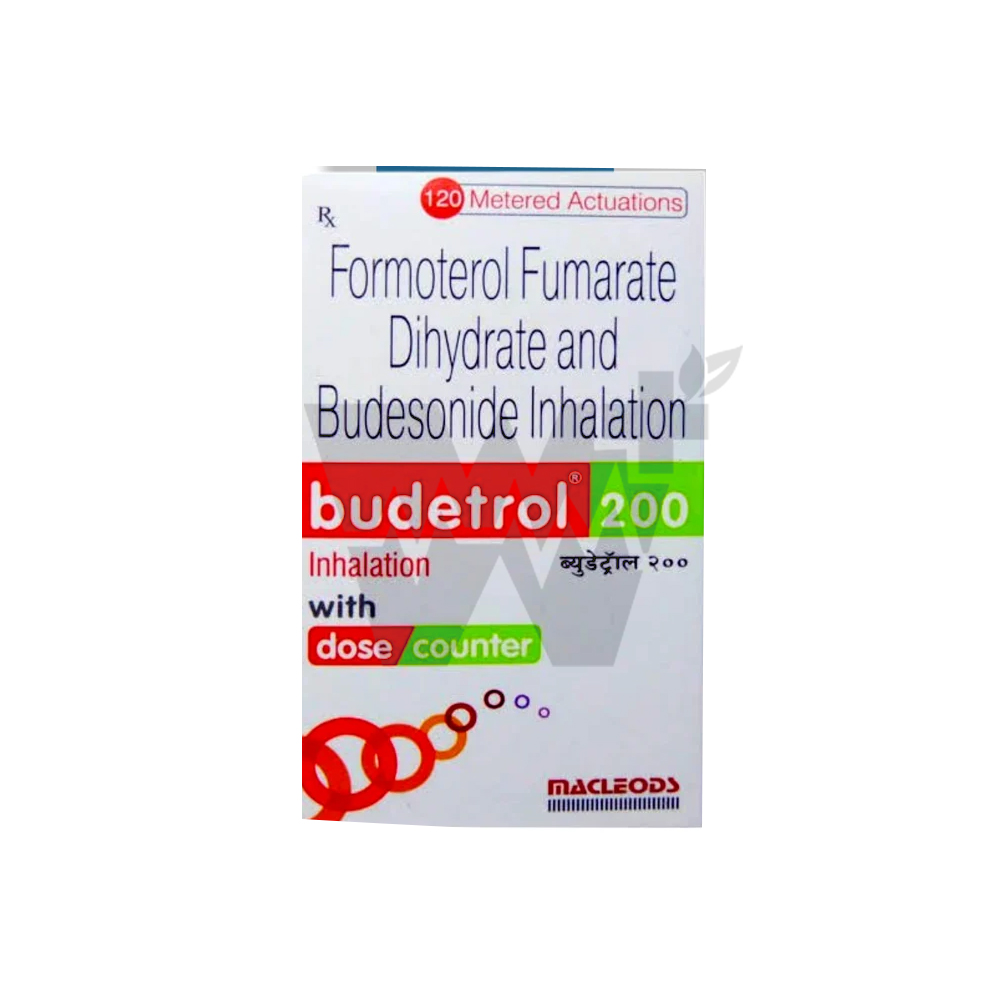



Introduction to Budetrol 200 Inhaler:
Budetrol 200 Inhaler is a combination of two medications delivered through a single inhaler. It provides relief from persistent symptoms associated with asthma and chronic obstructive pulmonary disease (COPD), facilitating easier breathing. The inhaler functions by inhibiting the release of specific chemical messengers responsible for inflammation (swelling) and relaxing the muscles in the airways.
Your healthcare provider will prescribe the frequency of inhaler use. Although the effects of this medication may become noticeable after a few days, the maximum benefit is typically achieved after several weeks of regular use. Consistent use is essential for effectiveness, even if you are symptom-free. Discontinuing the medication may lead to a worsening of symptoms, so it is crucial to adhere to the prescribed regimen. Note that Budetrol 200 Inhaler should not be used to alleviate sudden shortness of breath; in such cases, a rescue inhaler is recommended. Proper inhaler technique is essential for optimal results, as incorrect usage may diminish its effectiveness.
Uses of Budetrol Inhaler:
Treatment of Chronic Obstructive Pulmonary Disease (COPD)
Benefits of Budetrol Inhaler:
In the Treatment of Chronic Obstructive Pulmonary Disease (COPD)
Budetrol 200 Inhaler helps keep the airways in the lungs open by relaxing the muscles within these airways. This relaxation facilitates easier airflow, relieving symptoms such as chest tightness, shortness of breath, wheezing, and coughing, enabling you to carry out your daily activities more easily. The medication is both safe and effective, typically taking effect within minutes and lasting for several hours. It is important not to discontinue use unless advised by your physician.
Mechanism of Action of Budetrol 200 Inhaler:
Budetrol 200 Inhaler consists of two active ingredients: Formoterol and Budesonide. Formoterol, a long-acting bronchodilator, works by relaxing the muscles in the airways, thereby dilating them. Budesonide, a steroid, operates by inhibiting the release of specific chemical messengers responsible for inflammation and swelling of the airways. Together, these components make breathing more manageable.